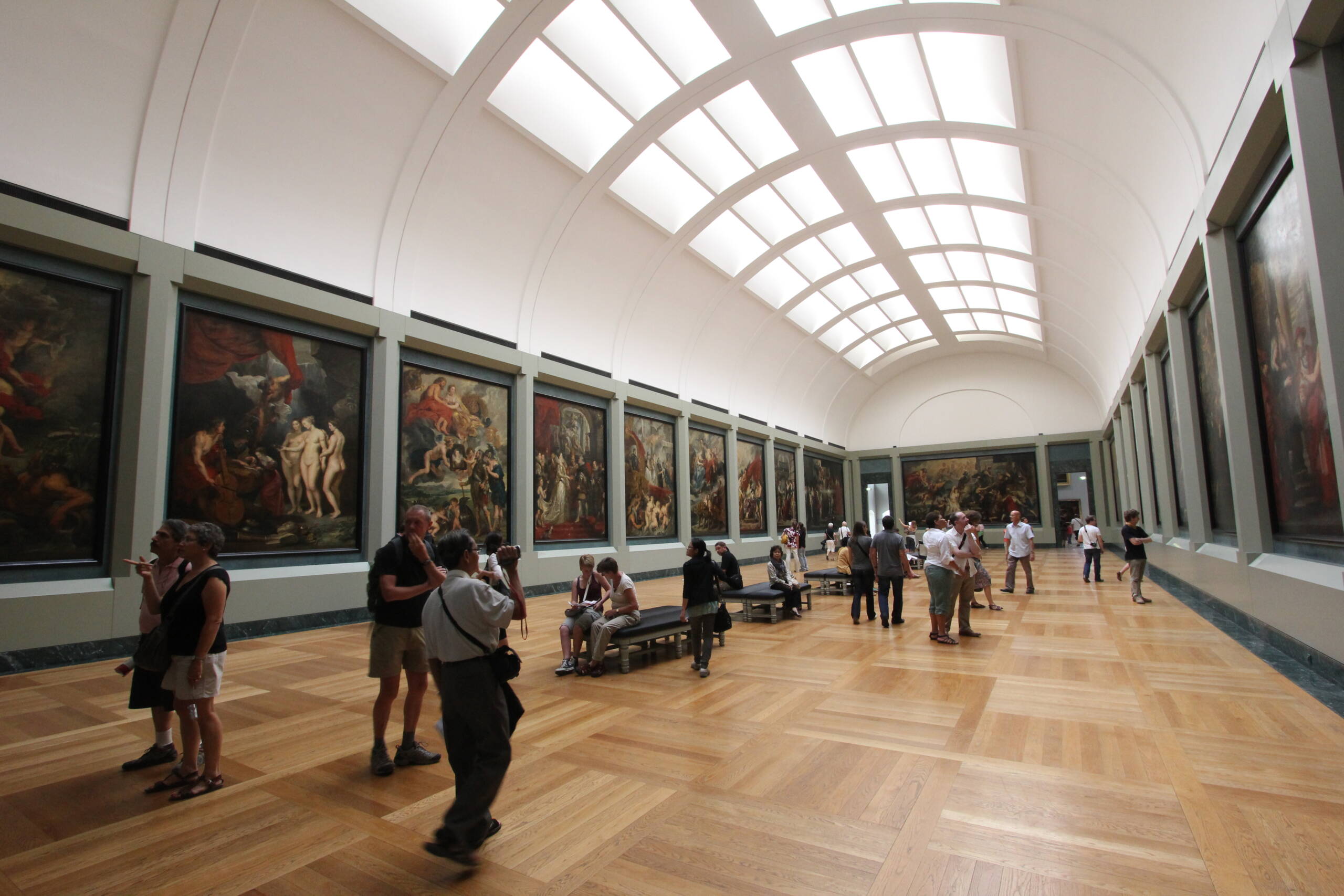There are places where art does not merely hang upon the wall or stand upon a plinth, but rather engulfs the visitor in a dialogue with history, beauty, and the divine pretensions of human genius. Few such sanctuaries exist, and fewer still maintain the aura of sacred permanence as the Louvre in Paris. Entering its vast courtyards and glass-roofed atriums, one feels less like a tourist and more like a petitioner arriving before an altar of civilization.
In the first grand hall, bathed in honeyed daylight filtered through the soaring canopy of glass and steel, the eye is seduced by an arrangement of sculptures so alive in their muscular precision that they seem to breathe in the ambient air of centuries. Noble marble figures wrestle in perpetual tension, heroes captured in the eternal stillness of stone, their dynamism paradoxically heightened by immobility. Visitors drift through the expanse as though moving within a tableau vivant: couples whisper reverently before gods of myth, while solitary admirers tilt their heads skyward, seeking to comprehend the scale of human ambition measured against the proportions of the palace itself. Even the trees, contained in geometric pots, perform a quiet choreography of shadow and light upon the pale stone, softening the severity of antiquity with the gentleness of nature.

From this sculptural sanctum, one wanders into a different temple, a hall where painting asserts its supremacy. Beneath a vaulted ceiling illuminated with softened light, the great canvases of Rubens stretch across the walls like operatic acts of drama, passion, and sensual tumult. Vast scenes of kingship, battle, and divine revelry unfold with a theatricality that nearly overwhelms. The air carries the murmur of awe and the occasional audible gasp as the sheer size and richness of color eclipse the familiar scale of ordinary life. Here, time is suspended: seventeenth-century flesh glows with an eternal radiance, while mythological figures appear as close as the people standing beside you. Travelers, armed with cameras, attempt to capture fragments of what is essentially uncapturable—the grandeur that requires not replication but immersion.

It is in the Louvre that the visitor becomes acutely aware of the paradox of museums: they are both vaults of preservation and stages for the perpetual resurrection of beauty. Each corridor, each chamber, is less an exhibition than a continuum, linking us to the spirits of those who created, admired, and venerated these masterpieces across centuries. To traverse the museum is to undertake not simply a tour but a pilgrimage, one that obliges you to move slowly, attentively, and with the humility of someone aware that they are standing in the presence of greatness.
Paris is abundant in elegance, but within the walls of the Louvre, one finds not the passing charm of a city, but the concentrated essence of humanity’s highest aspirations. To leave is not to depart but to carry with you a trace of its magnificence, like the lingering notes of a symphony heard long after the orchestra has ceased.
Leave a Reply